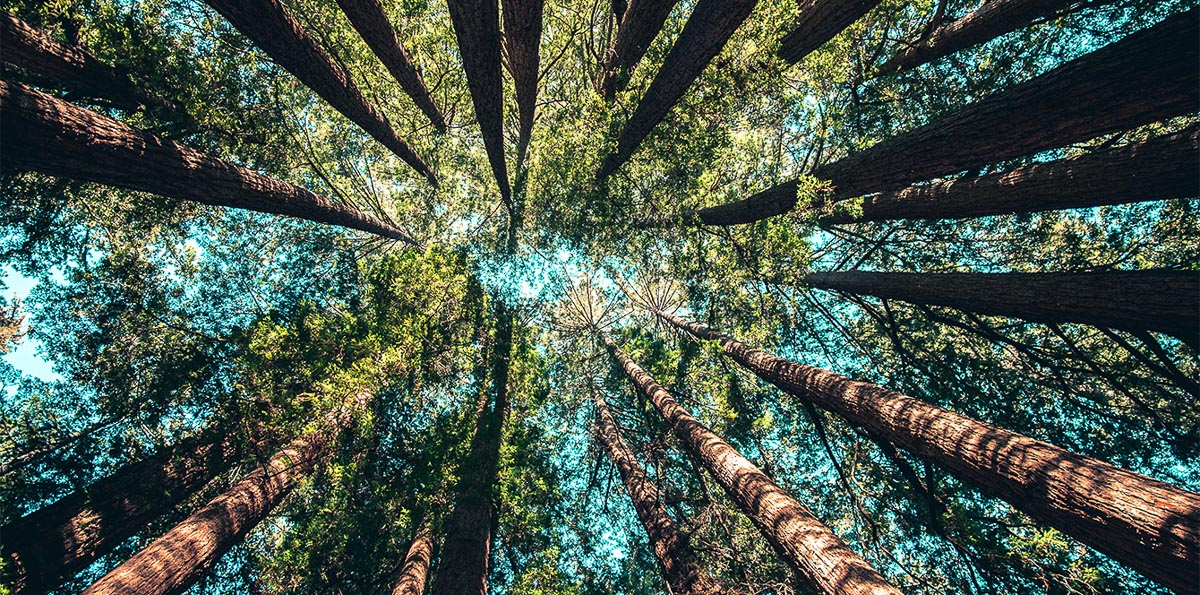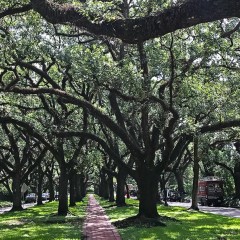Houston’s urban forest comprises all trees in the city, including street trees, park trees and yard trees. These trees are found in urban-area parks, gardens, esplanades, greenways and street-side planters and tree boxes.
Most people are familiar with the benefits trees provide, from reducing air pollution and stormwater runoff to improving water quality, lowering temperatures, and creating habitats for birds and plants. They also increase property values and quality of life and can be used to beautify commercial areas and attract more business. They can also help establish a sense of place for neighborhoods and boost biodiversity in urban areas.
As previously covered here on the Urban Edge, there are roughly 33 million trees in Houston, which equate to a canopy cover of almost 18.5%. The majority of those trees are on private property. American Forest’s Tree Equity Score project provides an interactive map of cities and metros showing where shade inequalities are greatest, as well as how many tree-plantings it would take to get closer to tree equity. Achieving Tree Equity in Houston — a score of 100 in all neighborhoods — would require planting approximately 2.4 million trees on public and private land.
Doing so would increase the size of the city’s tree canopy to 23% and could support more than 17,000 jobs. It would also help eliminate 2.2 million cubic meters of stormwater runoff — about 581 million gallons. More than 13.5 million cubic meters of rainfall would be intercepted by the additional canopy, keeping it from running straight into the stormwater system and overwhelming it.
Tree-planting goals can be hard to reach
If the city of Houston is successful in reaching its own goal for trees planted by the end of the decade, it will surpass the tree-equity mark by more than 2 million trees. The city’s ambitious plan to plant 4.6 million new trees by 2030 is outlined in its Climate Action Plan, which was released on Earth Day 2020. Adding trees to the city’s urban forest is an important part of the comprehensive effort to address climate change and make the city more resilient to it.
It’s become common for cities to set goals for planting trees to fight climate change. Whether the target be 200,000 or 1 million, the challenge is typically tougher than anticipated.
So far, more than 700,000 trees were planted from 2019–2020, and another 377,000 plantings are projected this year. That’s significant progress. But putting a tree in the ground is just the first step. The cost of stewardship can’t be left out of budget. It’s not cheap but it’s necessary, and the dividends paid by the trees in the long term will be worth the cost now.
To successfully reach the goal of 4.6 million will require making sure the plantings survive and mature. It’s unknown what portion of the trees planted may have already died.
A 2014 study from the National Forestry Service of more than 90,000 trees planted in Los Angeles from 2006–2010 found the mortality rate for street trees to be 4.4% each year. Elsewhere, the mortality rates are between 3% and 5%, according to CityLab, citing a 2011 literature review of 16 street tree studies.
Climate change, natural disasters and other challenges
Among the challenges to the success of forestry initiatives are preparing trees to be resilient and survive climate change, flooding, drought and other disasters. Trees and other green infrastructure are enormously helpful in offsetting the threat of flooding, mainly by acting as a filtering device.
“In Houston, if we optimize it out, trees would be intercepting about 13.5 million metric tons of rainwater, and it would be completely avoiding about 2.1 million of those tons,” said Ian Leahy of American Forests. “So, what that’s doing is capturing the rain and slowing it down, keeping it from jumping right into the stormwater system and overflowing that. And it’s also filtering pollution out.” That’s on top of the runoff that’s avoided altogether through what the trees absorb.
At the same time, disasters such as the 2011 drought, Hurricane Harvey and February’s winter storm have resulted in the loss of thousands of trees in Houston and the surrounding region.
Invasive species also pose problems.
In the Houston area, the current invasive threats include the Chinese tallow tree and oak wilt. Potential threats include invasive species like the Emerald Ash Borer and Southern Pine Beetle, according to a regional strategy for supporting urban forests from the U.S. Endowment for Forestry and Communities, American Forests and the Houston-Galveston Area Council.
Diversity is important
The regional framework also advocates for increased diversity in the species planted by “utilizing native and area-appropriate species” whenever possible and not relying too much on a single species.
“Diversity is key to resilience,” Paul Wood, an urban tree expert and author of “London’s Street Trees: A Field Guide to the Urban Forest,” told CityLab. “Milwaukee was once a monoculture of elms, which meant that when Dutch elm disease arrived in the 1970s, more or less the entire city had to be felled. Going back further, New York used to be filled with American chestnuts, all of which died in the early 20th century.”
Cities like London, which has 500 species of trees, serve as a good aspirational goal for Houston in terms of species diversity.
My City’s Trees, a tool from the U.S. Forest Service and the Texas A&M Forest Service that lets residents access and explore a city’s urban forest, lists 70 species of tree in Houston. Three of those — yaupon, Chinese tallow and Chinese privet — account for almost two-thirds (63%) of all trees in Houston. Tallow trees, which are an invasive species, constitute 12% of the city’s trees.
Three species — loblolly pine, live oak and water oak — account for 41% of total wood volume in Houston. Those three species account for 40% of total carbon storage as well. Live oaks, water oaks and Chinese tallows account for 37% of the total compensatory value of trees as structural assets in Houston ($2.62 billion total). An American Forest study from 2000 estimated that the annual value of lost tree canopy in Houston from 1972 to 1999 was $55 million.
More than 70% of Houston’s trees are small or young trees, less than five inches in diameter. Larger, more mature trees capture more carbon and provide more shade and habitat, but smaller trees are important as well, especially in areas of greater densification.
Other challenges include public perception, lack of resources and capacity, and equity. In Houston and other cities, trees disproportionately benefit some neighborhoods more than others. Typically, these inequalities fall along racial and economic boundaries.
There’s a discrepancy of about 14% between the canopy cover in the richest and the poorest neighborhoods in Houston, Leahy said. And a 16% difference between communities with the highest shares of white residents and those with the highest shares of residents who are people of color.
A number of planting initiatives
As part of its resiliency strategy, the city wants to increase canopy coverage by 25% on city-owned property by 2040. There are many tree-planting initiatives currently at play in the Houston area, where some of the densest remaining urban forests are in rapidly developing areas.
Plans to expand the canopy include restoring municipal nature preserves, riparian buffers and linear forests on street medians. The Parks Department’s Riparian Restoration Initiative has a goal of restoring more than 1,000 acres of riparian buffers destroyed by development and stream channelization in 70 parks located along the bayous. That restoration effort includes planting over 200,000 trees.
The RE-Plant Houston campaign is an effort to grow the city’s urban forest by adding trees to city parks and green spaces managed by the Parks Department. The work is being done in collaboration with Trees for Houston, the Hermann Park and Memorial Park conservancies and the Houston Parks Board. And the Community ReLeaf master plan is a $2 million project that will guide the eventual planting of 20,000 trees.
The Parks Department’s NeighborWoods Program provides volunteers with free trees to plant on city rights of way. And the city offers resources and tips on best practices when planting trees. The Houston Area Urban Forestry Council has recommendations for which species of small, medium and large trees to plant in the Houston-area urban forest, as well as species to avoid, which include those that are invasive and susceptible to disease, insects and brittle wood. The city has also committed to making it easier to plant trees along in the green space between streets and sidewalks.
The Parks Department also has plans for a Legacy Tree Program to propagate native seedlings for restoration efforts around the city. And a tree nursery is being developed to accommodate 10,000 trees annually.
According to its 188-page Resilient Houston report, the city will work with community partners “to develop and implement a large-scale tree planting strategy using native trees.” Focusing efforts in areas impacted most by the effects of urban heat islands, air pollution and inequitable canopy cover.
While planting native trees is considered best practice, and restoration efforts are focused on replacing invasive species such as tallow trees with native varieties, the existing non-native trees play an important part in countering pollution. Tallow trees are responsible for 12% percent of pollution removal by trees in Houston, the highest share among species.
Leahy said the dominant focus of the regional framework was exploring the potential impact of Houston’s urban forest on issues of flooding and heat, especially considering the rising temperatures and the intensifying power and destructiveness of storms. “How do you how do you build a riparian forest that’s built for that type of environment? It’s all about picking the right species,” Leahy said.
Working with the Forest Service and the Northern Institute of Applied Climate Science, vulnerability projections were developed that show the “best species to plant in the next 50 years, as opposed to the last 15 years,” he said.
In other words: “What species are going to be most resilient, and will be able to survive being drowned in salt water for a few days before that drains off, while also proactively helping to filter stormwater?”


